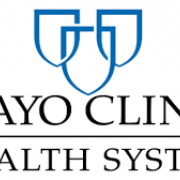You are looking at an archived version of our site. Please visit thepcc.org for a fresh, new experience!
Administrators, Quality Improvement Professionals, & Organizations

Patient and family advisors at Ocean Park Health Center, San Francisco, CA
Research has shown that input from patients and families on care delivery and the implementation of Patient & Family Engagement strategies directly impacts quality. Health reform efforts are shifting providers’ financial incentives from fee-for-service to payment for health outcomes (value-based payment & alternative payment models). Success in a value-based payment contract requires a progressive population health strategy. Best practice models of population health align health systems with community-based organizations to synergize efforts to address the health of targeted health risks in the community.
Top Five
Reasons to Focus on Improving Patient & Family Engagement at Your Practice
- Improved quality and safety
- Improved financial performance
- Improved patient outcomes
- Increase employee satisfaction and retention
- Increase number of MIPS Quality Measures to report under QPP
6 Questions to Assess Patient Engagement
Does the Practice...
- Use an e-tool accessible to share information such as test results, medication management list, vitals, and other data?
- Support shared decision-making by training and ensuring clinicians and care team integrate patient goals and preferences into care plan?
- Use a tool to assess and measure patient activation?
- Assess the health literacy of your patient population (e.g. - CAHPS Health Literacy Item Set)?
- Promote patient-centric medication management practices (self-management of medication, etc.)?
- Have policies, procedures and actions taken to support patient and family participants in governance or operational decision-making committees of the practice (Person and Family Advisory Councils, Board Representatives, etc.)?
Resources by Topic
Redesigning the System Together
- ‹ previous
- 5 of 12
- next ›
Community Partnerships
PCPCC | June 2017
American Academy of Pediatrics, National Resource Center for Patient/Family-Centered Medical Home | May 2017
This resource provides practical tools for providers to increase family engagement in pediatric care. It emphasizes the importance or creating a plan and sharing decision-making responsibilities with patients and their families.
- ‹ previous
- 5 of 8
- next ›
Quality Payment Program

Northern New England Practice Transformation Network | April 2018
AHRQ | April 2018
- ‹ previous
- 5 of 14
- next ›
Patient Safety
- ‹ previous
- 5 of 7
- next ›
Policy & Governance
- ‹ previous
- 5 of 10
- next ›
For Small, Rural Practices

Northern New England Practice Transformation Network | April 2018
- ‹ previous
- 5 of 16
- next ›
For Ambulatory Practices
- ‹ previous
- 5 of 11
- next ›
Everyone has a role to play. Explore how you can get involved today...
Secondary menu
Copyright © 2024 Primary Care Collaborative









